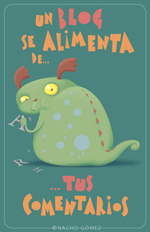Like any play, what goes on on stage is only half the story. Behind the scenes is usually a frenzy of hidden activity and this summer's play was no exception. Our productions focus on colour, music and movement (as opposed to dialogue) and generally involve a large cast of kids, so they inevitably end up relying heavily on props.

The props for a cast of 22 kids take up a LOT of space - think 20 space pistols, 20 light sabres, 8 UFOs, a heap of galactic guns, 12 love hearts, 24 shiny pom poms, 22 shower caps and alien glasses and you'll get an idea (we were basically only missing the partridge in a pear tree and the kitchen sink). Add into the mix the 22 kids themselves, a space rocket, 2 astronauts, 5 hula hoops, puppets for the black light scene, and 6 backstage helpers and life gets decidedly overcrowded.
Needless to say we have learnt over the years the importance of a well-run backstage area!
So, a few pointers for anyone finding themselves in danger of being drowned in backstage prop chaos!
1. Get a good backstage team together 
I can't stress this enough. You need enough helpers backstage (but not so many it adds to the confusion - I suggest starting with 2 and gradually training people up). Get them involved as early as possible in the process, even if it seems pointless at the beginning - it gives you time to gel and become that "well-oiled machine" and it gives your helpers time to get familiar with the play. Have regular meetings; make sure they feel involved.
2. Be organised!

Encourage the backstage team to work out a system for organising the props and get it going as early as possible in the process.
Team members should be given specific tasks to be in charge of. This helps the kids enormously as they know who is doing what and will also help you spot when extra helpers are needed.
Cheat sheets with cues and props/scene changes summarised and stuck to the wall are a great help - and mean that if someone has to step in at the last minute for some reason, they will know more or less what they should be doing.
3. Get working props together as soon as possible
It is very important to start working with props as early as possible in the process, especially if you are working with children. They can be stand-in props if you want to save the real thing for the performance (this is sometimes a very good idea, especially when you are working with kids, as props take a lot of wear and tear) but should be as close as possible in weight and dimensions to give a clear idea of how it will work in the performance. It will also help the backstage team work out a strategy for dealing with the props. They need to work out who will receive and who will hand out which props? Where they will be stored? Whether there are any difficult changeovers that need special attention etc...
4. Practise the backstage routine as part of the rehearsal process
Get helpers used to taking rehearsals seriously (it can be tempting to "coast" through the early rehearsals
) and practise any tricky moments/changeovers that are causing trouble as they happen. If necessary, stop the rehearsal and talk the team through who is doing what.
5. Cultivate a responsible attitude in the children when they are backstage
This takes a concerted effort by the group leader and needs to be backed up by the backstage team.
- insist on silence backstage: this can be hard for kids to understand especially if they are young or they have never been in a play before; even "experienced" young actors can find long stretches behind the scenes tedious.
Some tricks for encouraging silence:
- encourage a little healthy competition to see which student or group is quietest during any given scene. We tend to have half the cast at each side of the stage during our productions, so we encourage them to try and beat the opposite team. We plot "progress" on a magnetic board and whichever team wins the most points temporarily wins the Silence Trophy... until the other team wins it back etc. (In reality, they spend weeks fighting over a spray painted yogurt pot!)
- if the problem persists, make a CD of a quiet part of the sound track of the play and add background noise of children talking, then play the CD at the start of a rehearsal (as if you have recorded them) to show them what it sounds like to the audience when they all talk backstage
- as a back-up plan on The Night, have a packet of chewy sweets on hand to keep their jaws occupied... but watch out if they have dialogue looming!
- encourage a responsible attitude to props

Kids have boundless enthusiasm, energy and curiosity, a combination that lends itself well to doing theatre
... but which can wreak havoc on your props if left unchecked. Adopt a zero-tolerance to silliness when the kids are handling props
. "Talk up" the arrival of any new prop as a big event and treat props as a reward they have earned through good behaviour. By the same token remove props immediately from anyone who messes around with them
and explain how they can "win" them back again. We often use a particularly attractive prop (this year it was the light sabre, for example) as the "carrot" for treating all the props well (anyone who breaks their glasses on purpose will have a bendy balloon instead of a light sabre"). This technique is also very useful for teaching responsible handling of potentially dangerous props (again, like the light sabres).
We reminded the children every time we got them out that anyone misusing their prop would not be allowed to use it.
- wherever possible delegate small tasks and responsibilities to the more able kids
Kids have great memories and often know exactly what should be happening next in a play. If any of your group seem to be consistently good at anticipating upcoming moments in the play, then don't be afraid entrust tasks to them (but use your discretion!). This can work very well for moments that happen on stage (and so are out-of-your-reach), helping little ones find their places, for example, or pushing a certain prop on or off.







































